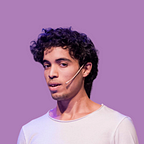30 days of fasting, an experiment
initial observations from an N of One experiment
I’m now halfway into a 30 day fast. In a future post I will share all of my data, but for now I have made many observations that I believe are worth sharing.
While I have fasted multiple times during the month of Ramadan before,
this time, I will be making a bunch of additions such as: pricking my fingers to take blood drop samples, sticking a sensor on my left arm etc. etc.
While this could make a person think that I’m going nuts, that’s ok. They wouldn’t be entirely wrong.
So, what this post is about
I have made a couple of observations already that I could not abstain from sharing early:
- Sitting under the sunlight can increase my glucose uptake. Wait, what? Yup, apparently that is possible.
- Improvements in Resting Heart Rate and Heart Rate Variability.
- Adaptations to using fat as fuel.
Remember that these are just vague observations, and it is too early to infer anything. But in the next two weeks, hopefully, I will have a clearer picture.
What I observed so far
Note that the form of fasting I’m currently following consists of an eating window of about 2 hours after sunset (from around 9pm to 11pm-ish). The rest of the day I am not eating nor drinking anything (nope, no water).
1 — Improvements in Heart-Rate Variability and Resting Heart-rate
Usually, an increase in Heart-Rate Variability is a sign of an overall improvement in health and recovery. On the other hand, a low Resting Heart-Rate (unless it is too extreme) is associated with a more recovered heart, good fitness, and overall health.
For the past two weeks, I’ve seen both as you can see here:
These are both measured using the Oura ring. Note that it is still possible that there are other confounding factors. We’ll see in the next days!
2 — Lower anxiety levels during the fast
For the past year, I have been taking subjective measurements for my anxiety levels and here’s what they look like for now that the fast has started.
This is comparing the weeks prior to the fast with the weeks after the fast started.
Because these measurements are subjective, this could potentially bias the rest of my logging, but I will try not to fool myself as much as I can.
3 — Adaptation to ketone utilization even with carbohydrate intake
It seems like there is some obvious adaptation to using fat instead of glucose as fuel. While this is not entirely surprising, I’m surprised to see how fast I currently switch to a therapeutic level of ketosis. This is surprising to me because, I eat a reasonable amount of carbohydrates in my eating window.
These measurements are taken using the KetoMojo. And, once again, it’s too soon to tell.
4 — Sunlight exposure increases glucose uptake
This is by far what surprised me the most.
I was surprised to see my glucose levels spiking while I was taking a sun bath in the balcony.
This could be explained by an acute rise in nitric oxide levels. There have been several studies linking the exposure to sunlight and UV light to the production of nitric oxide. Which seems to make your muscles work more efficiently during endurance exercise. Boosting levels of nitric oxide can also acutely lower blood pressure and regulate blood sugar, by increasing glucose uptake. Other studies have also found that sunlight exposure can help with diabetes, while vitamin D supplementation alone does not provide the same effect.
That makes me want to sit in the sunlight more just for the fun of seeing my glucose acutely spiking.
Conclusion
It will be more interesting to run some experiments on some of these observations later in a more controlled way.
For now, it’s too soon to tell.
The sun is cool, you’re cool, stay cool.
I’m hungry.
See you later,
